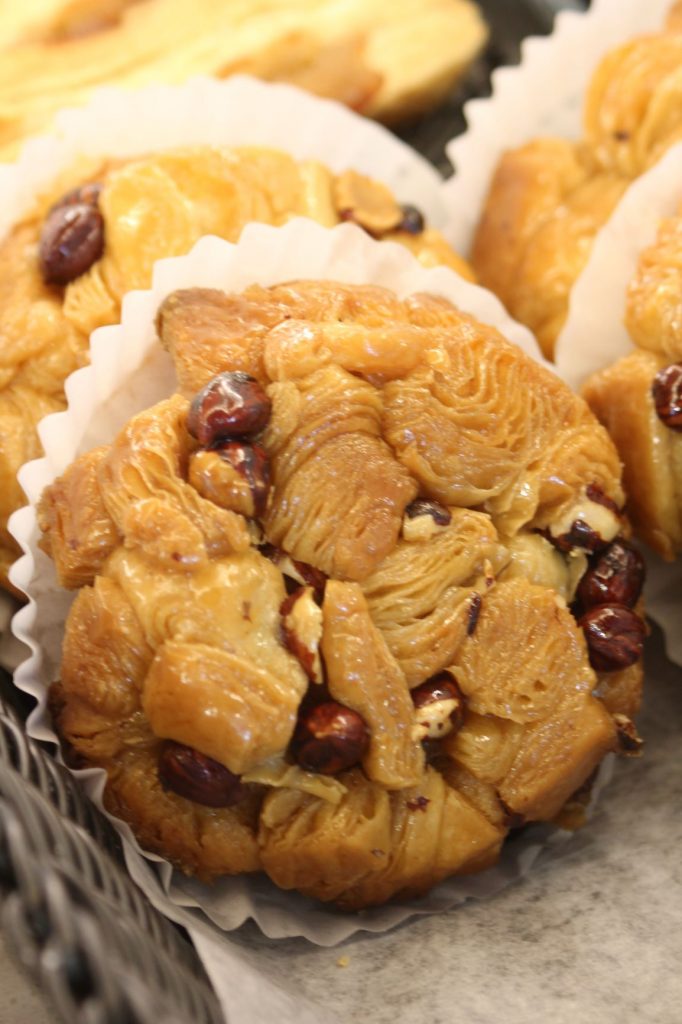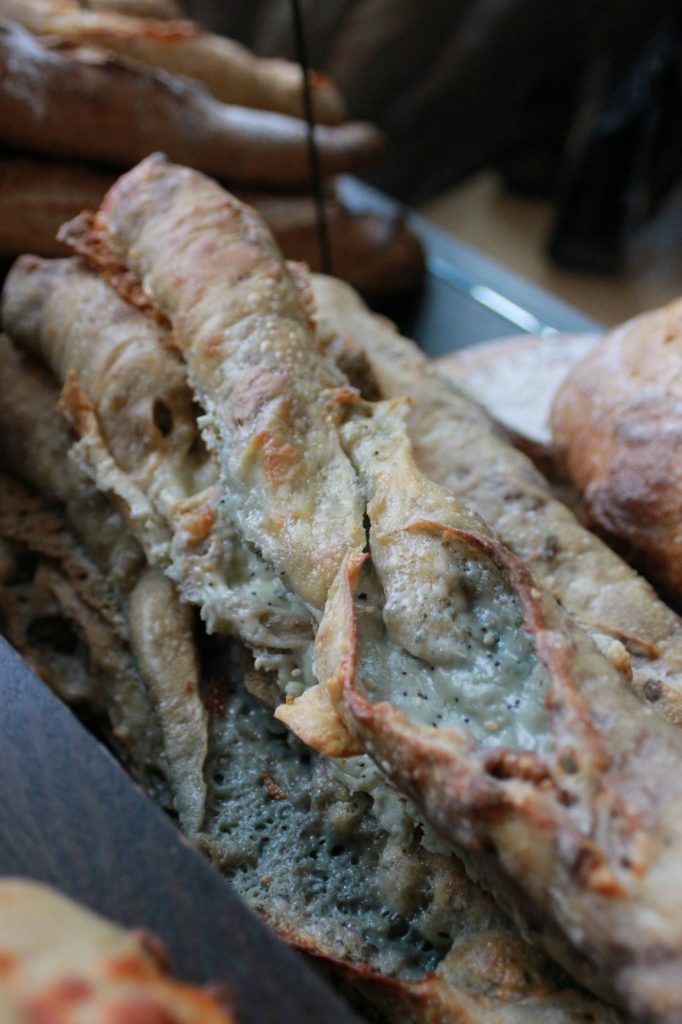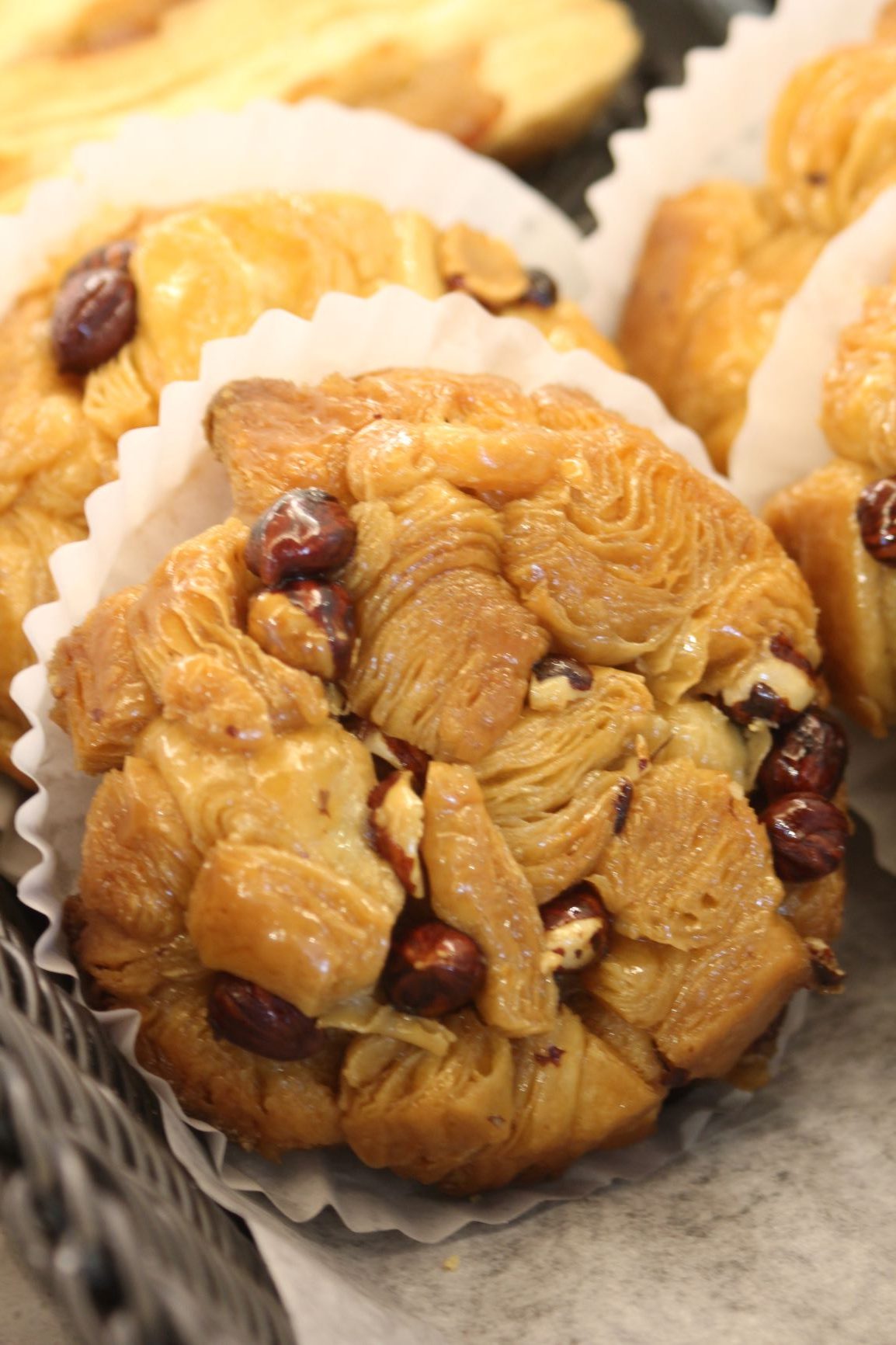Mamie's secrets about 2 of the leading products
A while ago, Mamie shared some of her secrets about her famous salmon gravlax sandwich and her fresh strawberry pie. Mamie has decided once again to bring you behind the scenes and share two of her recipes: the fabulous blue cheese and walnut ficelle as well as her version of the Kouign-amann, the Mamie Kouign. Discover the artisans who are involved in their preparation and the step by step process to a delicious homemade product you will enjoy every day.

Mamie Kouign
The product base: croissant dough
To prepare a good croissant, you have to count several steps and a lot of patience, because it takes time. Once the baker has kneaded the croissant dough with a bread mixer, he/she lets it stand overnight. Once it is well rested, the tourier (which is the baker who takes over the next steps) passes the dough through the rolling mill, it is a machine that spreads the dough and thins it to the desired thickness.
The tourier then inserts some butter and makes several rounds, that is to say several foldings in order to get the croissant’s puffy pastry. Then he/she puts them in the fridge to cool for a few hours. Afterwards the tourier takes the dough and spreads it into the desired thickness. Finally, the dough is cut and rolled to create a croissant.
The ultimate step: hazelnuts and brown sugar
To realize the Mamie Kouign, the pastry baker uses the croissant’s trimmings, i.e. the unused edges. It cuts out the trimmings and then adds hazelnuts, which he/she bakes to make them tasty and crunchy and adds brown sugar. Then he/she mixes it all by hand. This step is quite an art, because the mixture needs to be well-coated, avoiding it to become a big ball of dough. For the final step, the pastry baker adds the mixture to the well-greased molds.
The little + : the caramelization
The Secret to a successful Mamie Kouign is in the cooking! In fact, the baker supervises the cooking time to obtain a slightly clear center and a perfectly well caramelized look.
The blue cheese and walnut ficelle
The product base: the bread
To develop the ficelle the baker first makes the dough: for this he/she uses a method of kneading which is called autolysis, it provides tenderness to the bread and gives it a better appearance. When the baker makes bread autolysis process, he/she must mix the water and the flour, knead them for 4-5 minutes and then let the dough rest between 20 and 40 minutes.
In general, the resting process of the dough does not exceed one hour. The aromas of the dough will develop during autolysis. It is after this stage that the baker adds the rest of the ingredients which are mainly the yeast and salt. Then the baker adds the nuts to the dough and lets it rest for 24 hours.
The important key: the blue cheese
The baker can now work the dough to give it its form. For this, he/she makes rectangles of dough and then puts the blue cheese in the center. Then he/she closes the dough on itself so that the blue cheese stays in the middle and shapes it to the desired size. Then he/she lets it rise for about an hour.
The ficelle is ready to be cooked: the baker responsible for the oven then takes over. The ficelle is very thin, so the cooking time is very brief!
More info : the walnuts
Because the bread dough is acidic, it is not uncommon that during the fermentation stage the walnuts makes the dough go violet! It is therefore important to mix together the nuts and the dough during a short period of time to avoid or limit the change of color.

Mamie hopes that this reading made you want to taste these two great classics! See you in a few weeks to discover new manufacturing secrets.
